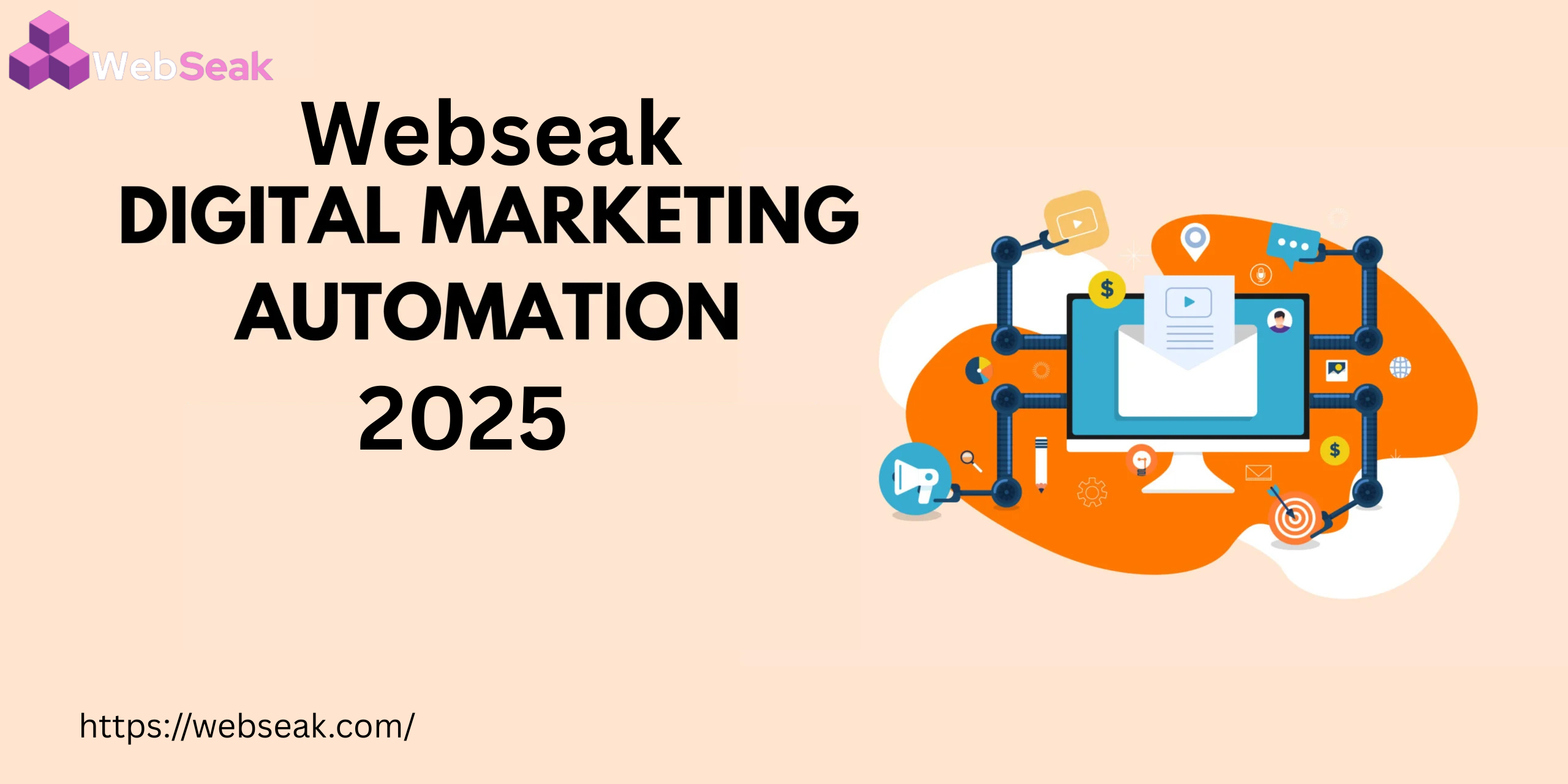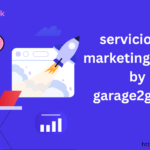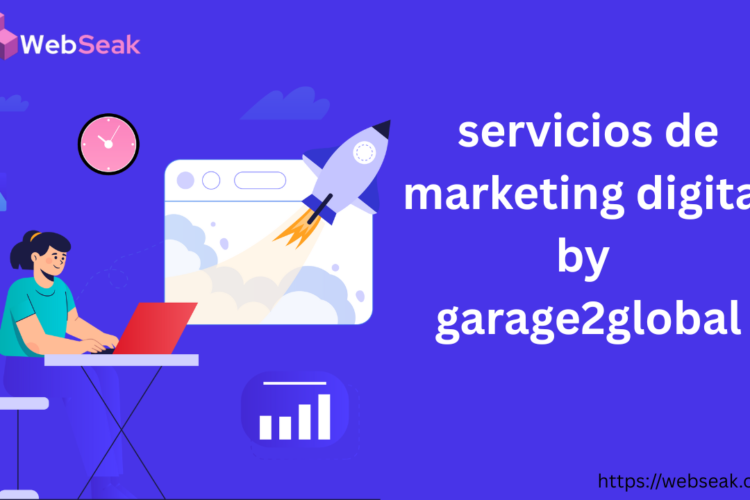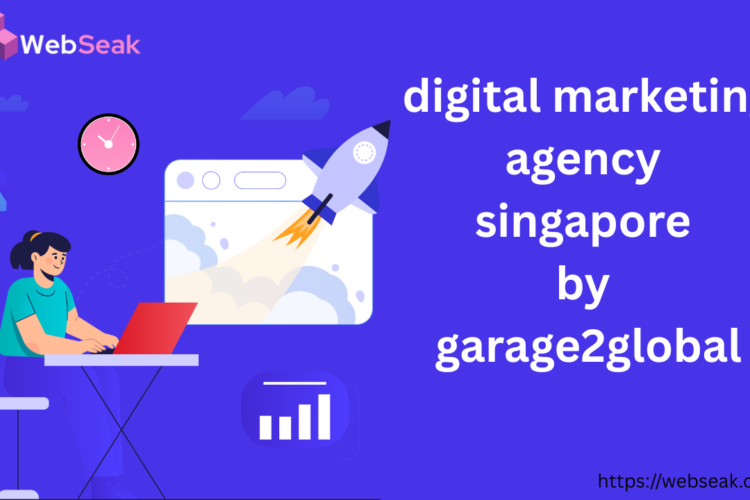
In an age where speed and precision are key to online success, digital marketing automation has emerged as a powerful solution for businesses of all sizes. From nurturing leads to optimizing ad campaigns and tracking customer behavior, automation can significantly reduce manual effort while increasing efficiency.
At Webseak, we understand how crucial it is to use the right automation tools and strategies to grow online. This comprehensive guide explores what digital marketing automation is, how it works, the top tools available, and how your business can benefit from it.
Table of Contents
What is Digital Marketing Automation?
Digital marketing automation refers to the use of software platforms and technologies to automate repetitive marketing tasks and workflows. These tasks include sending emails, posting on social media, managing leads, scoring prospects, running advertising campaigns, and more.
Instead of manually handling each step, businesses can use automation to deliver personalized messages at the right time, to the right people, across multiple channels.
Why Marketing Automation Matters Today?
With consumers expecting instant responses and personalized experiences, businesses cannot afford delays or inconsistencies. Here are the main reasons digital marketing automation is essential:
Saves Time and Resources
Automating repetitive tasks like email follow-ups, social media posting, and lead scoring frees up your team to focus on strategy and creativity.
Improves Customer Experience
Automation tools allow you to send relevant content based on user behavior, resulting in better engagement and satisfaction.
Increases Efficiency
You can manage multiple campaigns and customer touchpoints simultaneously, reducing human error and improving performance.
Drives Revenue
By nurturing leads more effectively and improving conversion rates, automation directly impacts your bottom line.
Key Features of Digital Marketing Automation Tools
A good marketing automation platform typically includes the following features:
1. Email Marketing Automation
Automated email campaigns triggered by user actions such as form fills, downloads, or website visits.
2. Lead Scoring and Management
Automatically rank and sort leads based on actions, demographics, or buying stage.
3. CRM Integration
Seamlessly integrate with your customer relationship management tool to track every customer interaction.
4. Social Media Scheduling
Plan and schedule posts across platforms from a single dashboard.
5. Behavior Tracking
Track user behavior on your website, email, or app to personalize future campaigns.
6. Analytics and Reporting
Generate automated reports for open rates, conversions, click through rates, and customer journey analytics.
Popular Digital Marketing Automation Tools
Several tools offer powerful automation capabilities for businesses. Here are some of the most widely used platforms:
1. HubSpot
An all in one platform that includes CRM, email marketing, sales automation, and reporting. Ideal for mid to large size businesses.
2. Mailchimp
A user friendly email marketing tool with automation workflows for small to medium businesses.
3. ActiveCampaign
Known for its powerful automation sequences, this tool supports email, CRM, lead scoring, and SMS marketing.
4. Marketo
Designed for enterprise level automation, it provides deep analytics and advanced audience segmentation.
5. GetResponse
Offers landing pages, webinars, email marketing, and automation flows in one package.
How to Implement Digital Marketing Automation in Your Business?
Introducing automation into your business involves strategic planning. Follow these steps for a smooth and effective implementation:
Step 1- Define Your Goals
Start by defining what you want to achieve. Is it more leads, higher engagement, better customer retention, or increased sales?
Step 2- Understand Your Audience
Use data to segment your audience based on behavior, demographics, and interests.
Step 3- Choose the Right Tool
Pick a marketing automation platform that suits your budget, team size, and technical requirements.
Step 4- Create Workflows
Build automation workflows for tasks such as welcome emails, abandoned cart reminders, lead nurturing, and post purchase follow ups.
Step 5- Integrate with Existing Tools
Connect your automation software with your CRM, ecommerce platform, and analytics tools.
Step 6- Test and Optimize
Monitor performance metrics and refine your workflows regularly for better results.
Examples of Marketing Automation in Action
Here are some real world examples of how automation can be applied:
Welcome Email Series
When a new user signs up, an automated welcome sequence introduces them to your brand, products, and values.
Abandoned Cart Reminders
If a user leaves products in their cart, an automated email reminds them to complete the purchase with an optional discount.
Re Engagement Campaigns
Inactive subscribers receive personalized emails offering value and asking if they wish to remain subscribed.
Social Media Auto Posting
Schedule weekly content across Facebook, Instagram, LinkedIn, and Twitter to stay consistent with branding.
Benefits of Digital Marketing Automation
The advantages of using automation tools extend far beyond time saving. Here is why more businesses are adopting it:
Improved Lead Nurturing
Leads receive the right content at the right stage, moving them faster through the funnel.
Consistency Across Channels
Automation ensures that your message is consistent whether on email, social media, or landing pages.
Better Data Collection
Detailed insights help you understand customer behavior and campaign effectiveness.
Scalability
You can run dozens of personalized campaigns at once without hiring a larger team.
Challenges to Consider
Although marketing automation is powerful, there are some challenges:
- Over automation may make messages feel robotic
- Poor segmentation can lead to irrelevant campaigns
- Upfront cost and setup time
- Requires training for effective use
By partnering with a professional agency like Webseak, you can avoid these common pitfalls and ensure smooth automation.
Webseak Tips for Effective Automation
- Start simple. Begin with one or two workflows and expand as you get comfortable
- Segment your audience to deliver personalized experiences
- Use A/B testing to find the most effective messages
- Combine automation with human touchpoints when needed
- Review data regularly to tweak and improve performance
Conclusion
Digital marketing automation is not just a trend. It is a proven strategy that drives better engagement, increases productivity, and boosts sales. Whether you are a solo entrepreneur or a growing business, the right automation tools and strategies can transform your marketing efforts.
At Webseak, we help businesses harness the full power of digital marketing automation. From tool selection to strategy design and execution, our team ensures that your marketing works for you even while you sleep. Ready to take your marketing to the next level? Automate with purpose and watch your business grow.





